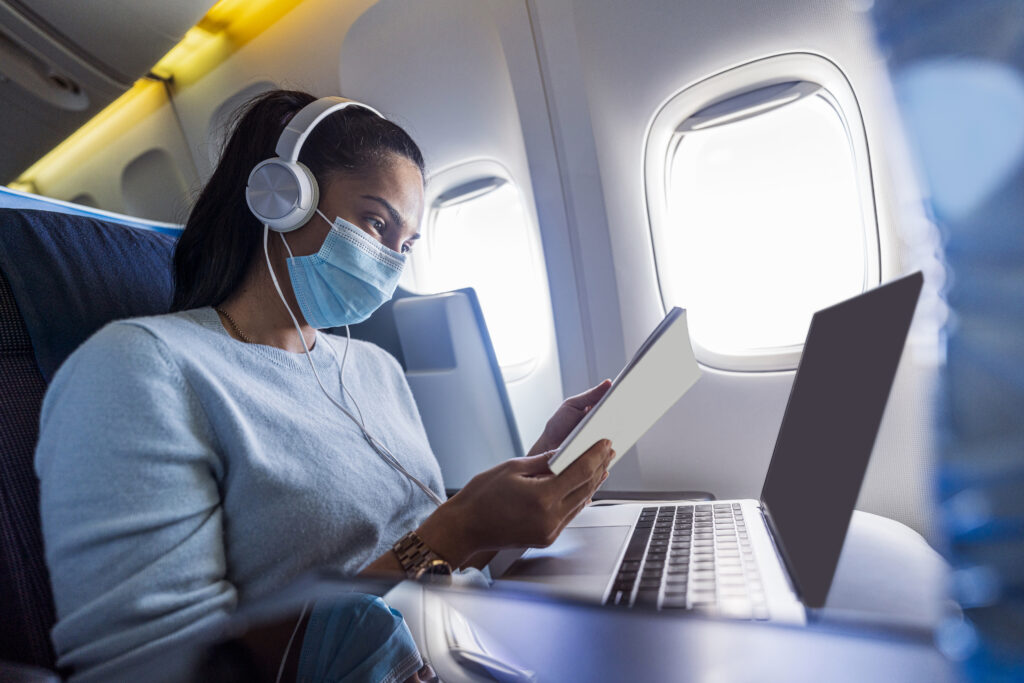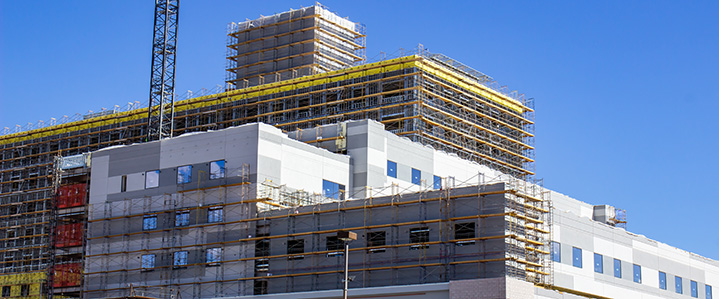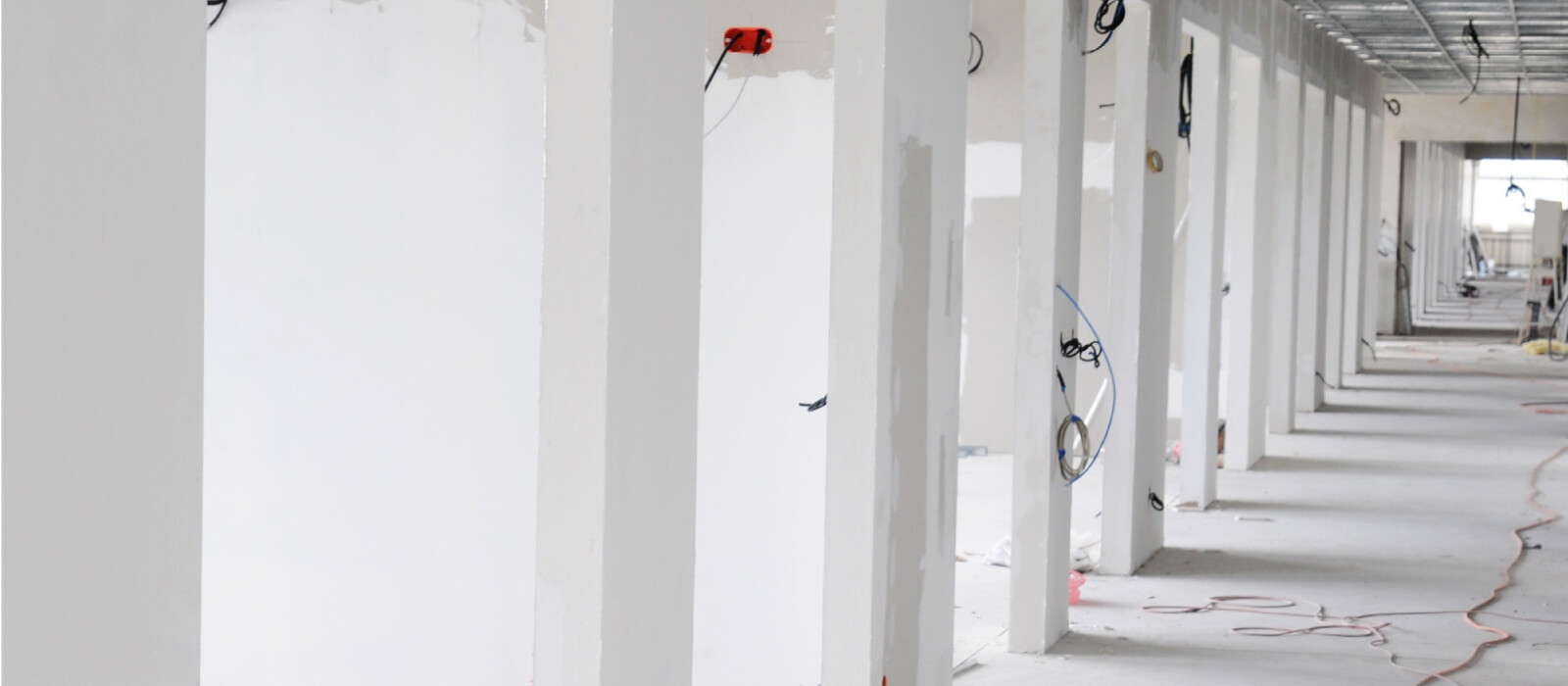How COVID Has Taught Us to Make Air Travel Safer

Airlines and airport operators are still trying to find their balance after the wallop the industry took due to the COVID-19 pandemic. Even as air travel continues to pick up in 2021, domestic air travel still remains below pre-pandemic levels. Perhaps the most frustrating part of this drop in passengers is airline and airport operators’ knowledge that much of this decrease in air travel stems from a misconception that airline travel presents a higher risk of viral transmission than other circumstances—a belief that is simply not supported by the data.
To combat this misconception, airlines and airline operators will have to proactively educate travelers and staff on the steps already taken to mitigate infection risks and future plans to ensure a healthier flying experience.
Addressing misconceptions
Airlines have been accused of putting profitability ahead of safety as travel restrictions ease and airlines return to full flights. Among recent charges was an April 2021 study from the Centers for Disease Control and Prevention (CDC) that concluded leaving the middle seats vacant could reduce viral exposure by up to 57% compared to a fully occupied aircraft. Although based on a useful 2017 study, the conclusions gathered were not necessarily supported by currently available research, since the authors did not factor in the use of face masks and other nonpharmaceutical interventions that were implemented to deal with today’s pandemic conditions.
In the face of seemingly conflicting information from even well-intentioned government agencies, as well as the lack of unified communications, and implementation strategies from the air travel industry, airlines and airport operators have been hard-pressed to assure travelers that flying is safe. Overall, however, airlines have put science-based practices in place that have been confirmed to reduce the spread of viral particles. High ventilation rates, coupled with directional air flow that moves particles consistently away from passengers and through HEPA filtration, in combination with other nonpharmaceutical interventions, has been proven to protect passengers.
The proof has been years in the making, as airports and airlines have long been aware of the potential for an increased risk of viral transmission on airplanes. In 2013, the Transportation Research Boards’ Airport Cooperative Research Program published ACRP Report 91: Infectious Disease Mitigation in Airports and on Aircraft to provide guidance for mitigating the risk of spreading various communicable diseases including the Ebola virus via droplets and airborne particles. The guide recommends 24 specific actions airport and aircraft personnel can take to improve the safety for their specific area of oversight. These tips remain relevant today with respect to COVID-19. However, stopping with these best practices would be akin to using 2017 data to drive conclusions about air travel risks today—it would ignore the factors unique to SARS-CoV-2 and a year of lessons learned.
Identifying gaps in knowledge
What makes SARS-CoV-2 a unique risk is that travelers can be pre-symptomatic, or even asymptomatic, yet highly infectious for several days. However, after a year of living with this virus, EH&E and other researchers have identified clear solutions for mitigating this risk, as well as steps airlines and airport operators can take to improve the overall health of their buildings.
By committing to the actions listed below, the air travel industry can make traveler health and wellbeing a standard part of their offering.
- Operate ventilation continuously
Many airlines have a practice of turning off ventilation systems during boarding and deplaning in order to reduce fuel consumption while at the gate. Although this might amount to as little as a 15-minute gap without ventilation, EH&E, working with other members of the Harvard Aviation Public Health Initiative (APHI), has determined that these gaps present a significant infection risk for travelers. These brief windows increase contact between passengers and employees as people move toward their baggage, congregate closely in the aisles while slowly moving towards the exit, raising the risk of infection through direct contact and aerosol dispersion. Forgoing this fuel conservation effort, and running ventilation during these windows, can mitigate this risk.
- Address stagnant air pockets
Despite airports’ action to improve ventilation, a number of unexpected areas have been found to be under ventilated and create localized pockets of stagnant air. For example, terminal busses and other transit solutions were found to be inadequately ventilated in many cases, as were jet bridges that often backed up with crowds boarding. In many cases, the plexiglass barriers set in place to minimize contact between people at ticket counters, retail outlets, and other locations, including various queues, proved to have the opposite effect. These barriers often served to impede and effectively reduce air flow to certain areas, minimizing the ventilation systems’ ability to dilute viral particles that could be emitted.
Crowded gates among other densely populated areas also occasionally suffered from inadequate ventilation as a result of poor ventilation diffuser design. Often these grilles are located as much as 20 to 30 feet above crowded areas within terminal. While this positioning may help disperse cool air, it does not support thorough ventilation of filtered air through throngs of people. Airport owners, managers and designers will need to consider localized air supply and dispersal solutions to support better airflow in areas of potential congregation.
- Require layers of nonpharmaceutical interventions
The Harvard APHI Phase Two “Curb-to-Curb” Report determined that a layered approach to nonpharmaceutical interventions can significantly mitigate infection risks at airports. This means combining personal hygiene measures such as wearing face masks and good hygiene including frequent handwashing; community measures such as social distancing, cleaning of high-risk surfaces, and encouraging people to quarantine as needed; and environmental measures such as enhanced ventilation strategies.
- Consistently support staff
The APHI investigation found that airlines and airports had a strong grasp of virus transmission routes, and interventions were designed appropriately to reduce this spread. What was lacking, in some cases, was consistent support for staff in requiring travelers’ compliance with safety practices. This support has become critical as conflict has not only remained a risk but has become even more prevalent throughout the pandemic.
- Educate travelers across multiple channels
Clear traveler messaging about expected behavior and consequences for noncompliance can serve as a strong first step for keeping staff healthy and safe. This messaging can be printed on tickets, posted on signs throughout airports, and even personalized through in-person greetings from airport “safety ambassadors.” This messaging works best, the APHI researchers determined, when consistent, repetitive and shared across multiple channels. Messaging also should highlight the advantages presented to travelers and be supported by efforts to make compliance as easy as possible.
Embracing a systematic approach to prevention
If there’s one thing that the COVID-19 pandemic has taught us, it’s the need to prepare a systematic, but flexible approach for future risk mitigation. As the pandemic unfolded, many airports and airline operators took a reactive approach to viral risks. For example, EH&E worked with one airport operator that was preparing to install more than $2.5 million worth of air cleaners into their ductwork on the recommendation of their HVAC contractor without any evidence of whether or not this investment would meet their needs. We saw airports shutting down restaurants to reduce the risk of viral transmission in areas where people congregated without masks, an action that later proved to have the opposite effect, as people flocked to, and often over occupied, poorly ventilated gate areas to eat. Without taking a systematic approach to risk mitigation, airlines and airport operators made choices that carried unintended consequences and created new risks.
Now is the time for airlines and airport operators to put a plan in place for healthier travel. COVID-19 will not be the last pandemic this industry, or our society, faces, but it can provide a template for stronger risk mitigation moving forward. A number of sound, analytic tools have emerged for identifying risks—ranging from artificial intelligence-based apps to coronavirus-sniffing canines—and these tools will provide strong support for the air travel industry going forward. However, to make the most of these tools, airports must better understand travelers’ journeys and their environmental impact.
Now is the time to build relationships with trusted partners who can support stronger decision making in the future and support stronger relationships with your air travel customers.
To start building a safer environment for your travelers, contact EH&E today.
Subscribe
to our blog
"*" indicates required fields




